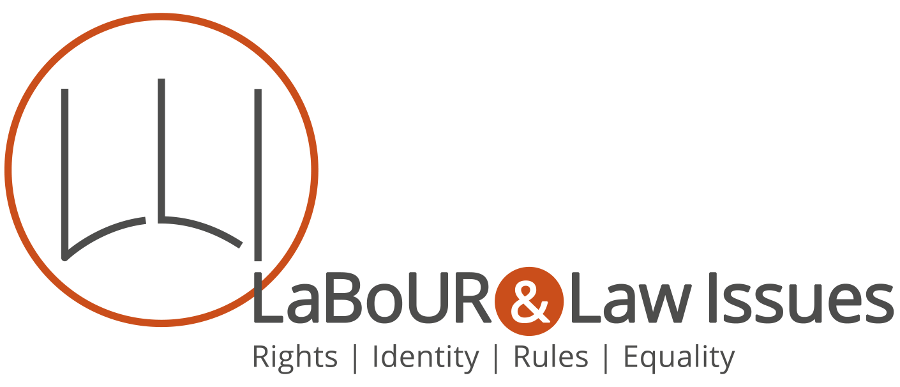As law firm case management software takes center stage, this opening passage beckons readers into a world crafted with good knowledge, ensuring a reading experience that is both absorbing and distinctly original.
In the evolving landscape of legal practice, law firm case management software has become an essential tool. It not only enhances efficiency but also ensures better organization and communication within law firms. By integrating various functions such as document management, time tracking, and billing, this software allows legal professionals to focus more on their cases rather than administrative tasks. Whether a solo practitioner or part of a large firm, the right case management tool can significantly impact the effectiveness of legal operations.
In today’s fast-paced world, the importance of effective communication cannot be overstated. It plays a fundamental role in both personal and professional interactions, shaping the way we connect with one another. Whether it’s a casual conversation with friends or a formal presentation at work, mastering the art of communication can significantly impact our relationships and success. To kick things off, let’s delve into the different types of communication and why they matter.
There are primarily three forms: verbal, non-verbal, and written communication. Each has its unique characteristics, advantages, and challenges. Verbal CommunicationVerbal communication involves the use of spoken words to convey messages. It can happen in person, over the phone, or through video calls. This type of communication is immediate, allowing for direct interaction and instant feedback.
The beauty of verbal communication lies in its ability to convey tone, emotion, and urgency, which can sometimes be lost in other forms.To enhance verbal communication skills, it’s essential to practice active listening. This not only involves hearing the words spoken but also understanding the underlying message. Engaging in conversations with open-ended questions can promote a more profound dialogue, encouraging participants to express themselves fully.
Additionally, clarity and conciseness are vital; avoid jargon and overly complex language that could confuse your listener. Non-Verbal CommunicationNon-verbal communication, on the other hand, encompasses a range of behaviors that convey messages without spoken words. This includes body language, facial expressions, gestures, eye contact, and even posture. Remarkably, studies suggest that a significant portion of our communication is non-verbal, with some estimates indicating that up to 93% of communication effectiveness comes from non-verbal cues.Being aware of your body language and the signals you send can greatly impact how your message is received.
For example, maintaining eye contact can express confidence and engagement, while crossing your arms may signal defensiveness or discomfort. It’s essential to align your verbal and non-verbal messages for authenticity. Written CommunicationIn an increasingly digital world, written communication has become more prevalent than ever. Emails, instant messaging, reports, and social media posts are all forms of written communication we encounter daily.
The challenge with written communication lies in its lack of immediate feedback and non-verbal cues, making it crucial to choose words carefully.When crafting written messages, clarity is key. Be mindful of your audience and tailor your language accordingly. Avoid overly complex sentences and be direct in your communication. Moreover, proofreading is essential. Typos and grammatical errors can detract from your message and diminish your credibility.

The Role of Empathy in CommunicationRegardless of the type of communication, empathy plays a vital role. It involves understanding and sharing the feelings of another, which can enhance the connection between individuals. When we communicate with empathy, we create a safe space for open dialogue, fostering trust and understanding.To cultivate empathy in communication, practice active listening. Acknowledge the speaker’s feelings and perspectives, and respond thoughtfully.
This not only strengthens relationships but also promotes a more collaborative environment, whether at home or in the workplace. Overcoming Communication BarriersDespite our best efforts, communication barriers can arise. These can stem from various sources, such as cultural differences, language proficiency, or emotional factors. Recognizing and addressing these barriers is crucial for effective communication.For instance, cultural differences can influence how messages are perceived.
What might be considered polite in one culture could be interpreted as rude in another. Therefore, it’s essential to educate ourselves about the backgrounds of those we communicate with and approach conversations with an open mind.Language barriers can be particularly challenging in diverse environments. Using simple language, avoiding idioms, and being patient can help bridge this gap. Additionally, don’t hesitate to ask for clarification if something is unclear; it shows your willingness to understand.
The Impact of Technology on CommunicationIn contemporary society, technology has transformed how we communicate. While it offers numerous advantages, such as instant connectivity and access to information, it also presents challenges. Digital communication can sometimes lack the personal touch of face-to-face interactions, leading to misunderstandings.To navigate the digital landscape effectively, it’s vital to choose the right platform for your message. For instance, a quick text or email may suffice for casual interactions, but more complex discussions might necessitate a video call or in-person meeting.
Additionally, be mindful of your tone, as written messages can easily be misinterpreted without vocal inflections. The Art of Persuasion in CommunicationAn essential aspect of communication, especially in professional settings, is the ability to persuade. Whether you’re trying to convince a colleague to adopt your idea or presenting a proposal to a client, mastering the art of persuasion can lead to successful outcomes.One effective strategy is to establish credibility.
Demonstrating your knowledge and expertise can instill confidence in your audience. Moreover, appealing to emotions can also be a powerful tool. Sharing personal stories or relatable experiences can create a connection and make your message resonate more deeply.Additionally, it’s important to anticipate counterarguments and address them proactively. This not only shows that you’ve considered various perspectives but also strengthens your position by being prepared to engage in constructive dialogue.
Conclusion: The Continuous Journey of Communication MasteryIn conclusion, effective communication is a skill that requires continuous practice and refinement. It is a multifaceted process that encompasses verbal, non-verbal, and written forms. By actively listening, being empathetic, and adapting to different contexts, we can enhance our communication skills and foster stronger relationships.As technology continues to evolve, so too will the methods of communication. Staying adaptable and open to learning will empower us to navigate these changes successfully.

Ultimately, mastering communication is not just about conveying information; it’s about building connections, understanding others, and creating a positive impact in our lives and the lives of those around us.Remember, communication is an art, and like any art form, it thrives on practice, patience, and a willingness to evolve. Embrace the journey and enjoy the connections you create along the way.
FAQ Resource
What are the key features of law firm case management software?
Key features typically include document management, time tracking, billing, client communication, calendar integration, and reporting tools.
How can law firm case management software improve client communication?
It streamlines communication through integrated messaging systems and client portals, ensuring clients have access to case updates and documents.
Is law firm case management software secure?
Most reputable software providers offer robust security measures, including data encryption, user authentication, and regular backups to protect sensitive information.
Can law firm case management software be customized?
Yes, many solutions offer customizable features to adapt to the specific needs and workflows of different law firms.
What is the cost of implementing law firm case management software?

Costs vary widely depending on the features, number of users, and whether it’s a cloud-based or on-premises solution, typically ranging from monthly subscriptions to one-time purchases.






















